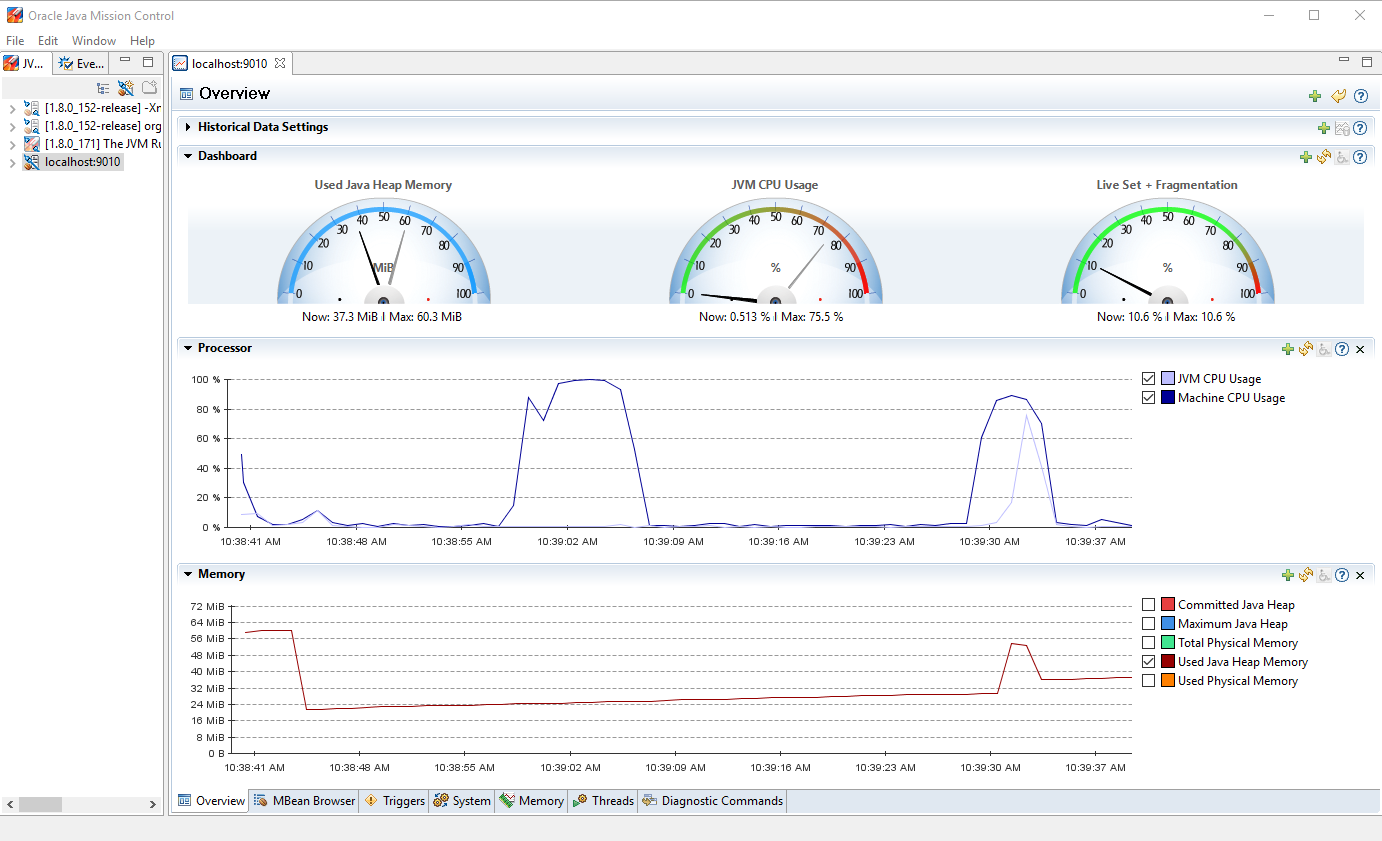How to connect Java profiler to the module running on Docker + Vagrant
Can be used for monitoring the state of the application JVM on the fly.
Step-by-step guide
1. Edit the Vagrantfile configuration to forward the JMX port
2. Run vagrant up
vagrant ssh
3. Run docker ps and note on which port the container in question is running on
4. Stop the docker container docker stop {container_id}
5. Run the container again with JMX port exposed and necessary variables set as JAVA_TOOL_OPTIONS
docker run -d -t -i -e JAVA_OPTIONS='-Xmx256m' -e DB_MAXPOOLSIZE='5' -e DB_USERNAME='folio_admin' -e DB_PORT='5432' -e DB_HOST='10.0.2.15' -e DB_DATABASE='okapi_modules' -e DB_PASSWORD='folio_admin' \
-e JAVA_TOOL_OPTIONS='-Dcom.sun.management.jmxremote.rmi.port=9010 -Dcom.sun.management.jmxremote=true -Dcom.sun.management.jmxremote.port=9010 -Dcom.sun.management.jmxremote.ssl=false -Dcom.sun.management.jmxremote.authenticate=false -Dcom.sun.management.jmxremote.local.only=false -Djava.rmi.server.hostname=localhost' \
-p 9010:9010 \
-p 9169:8081 \
localadd/mod-source-record-manager
To enable Flight Recorder pass the following options under the JAVA_OPTIONS property in the above command
-XX:+UnlockCommercialFeatures -XX:+FlightRecorder
6. Run docker ps again and observe that JMX port is exposed
7. Open your favorite Profiler, for example Java Mission Control, and connect to localhost:9010. Enjoy!



